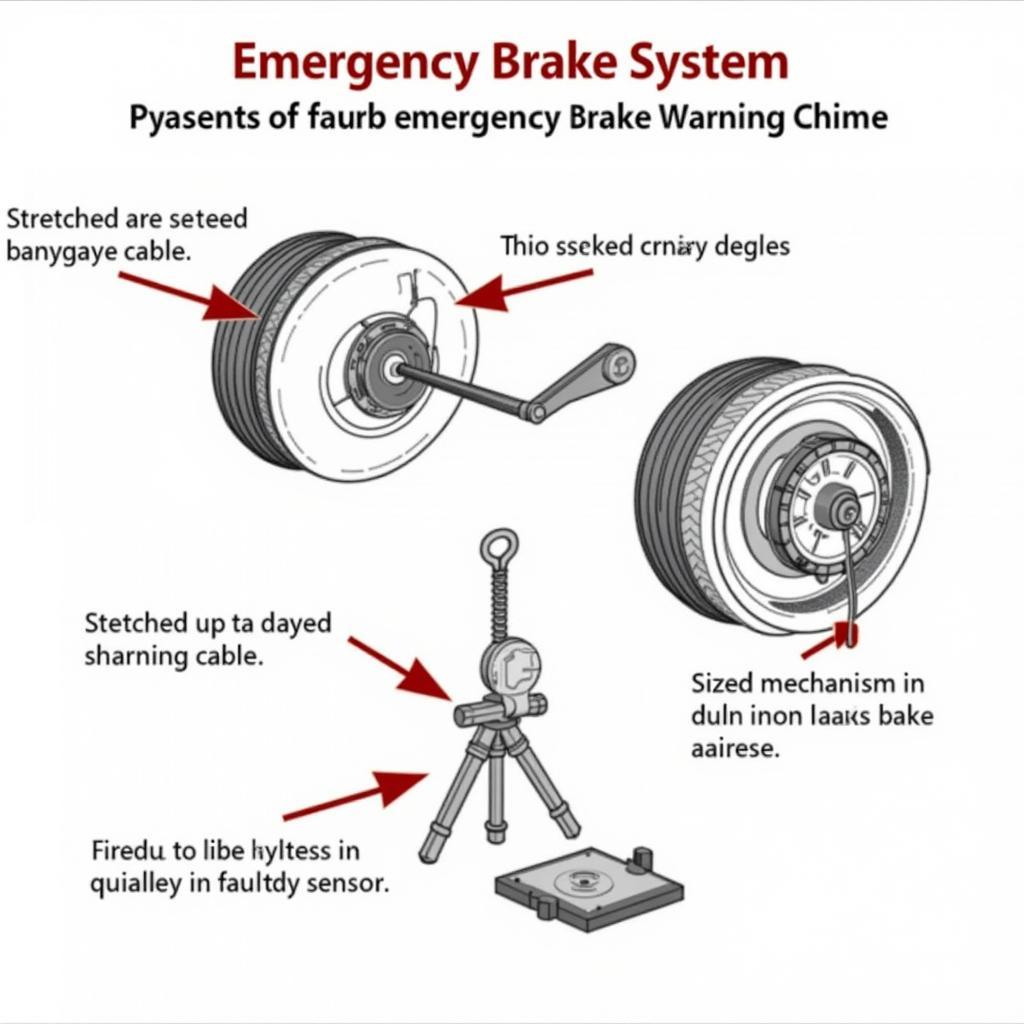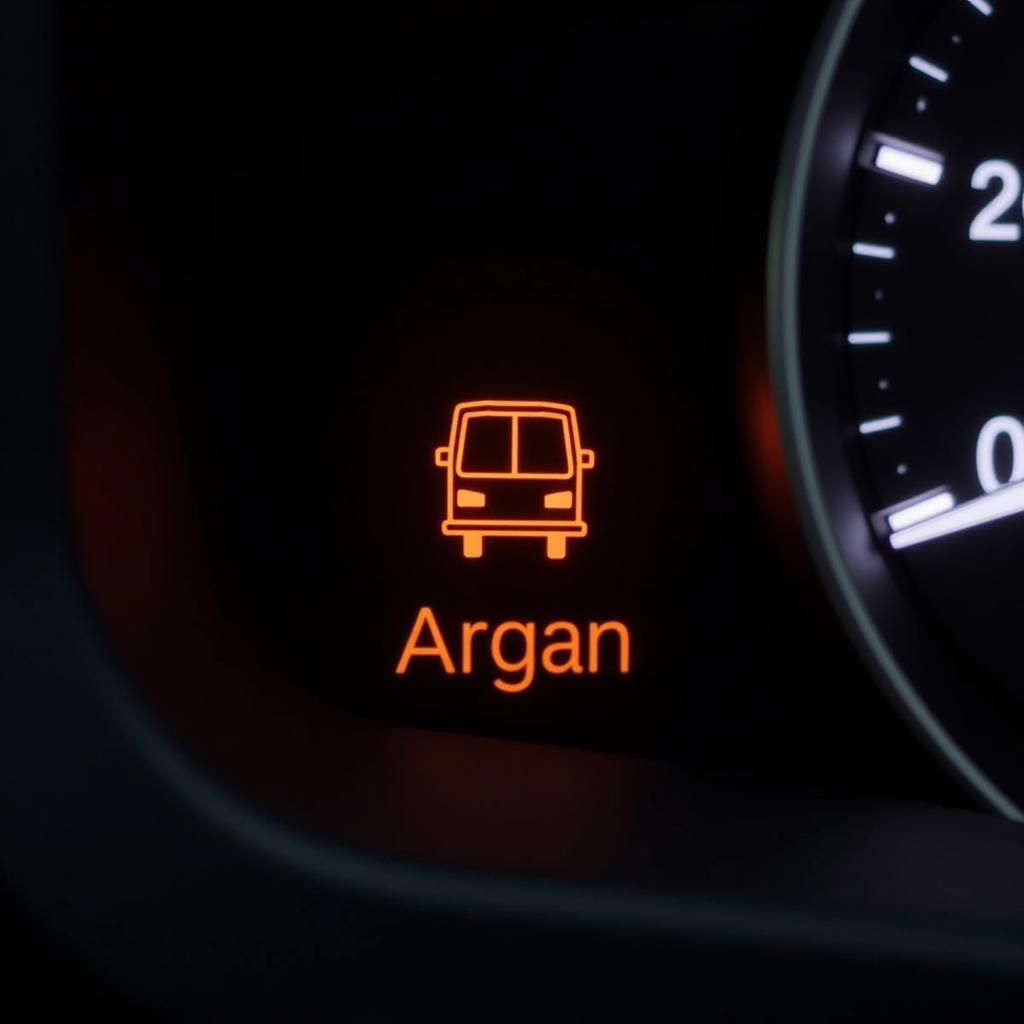Imagine cruising down the road when suddenly, a bright, often red, symbol lights up on your dashboard: the dreaded brake warning indicator. This little icon, shaped like an exclamation point inside a circle and surrounded by parentheses, can send chills down any driver’s spine. But don’t panic! Understanding what this symbol means and how to respond can save you from a potential headache, or worse, an accident.
This comprehensive guide will walk you through the common causes of a lit brake warning light, what to do when it appears, and how remote diagnostic services can provide a swift resolution.
Decoding the Brake Warning Light
The brake warning indicator symbol serves as your car’s way of communicating a potential problem within the braking system. While the specific meaning can vary slightly between car manufacturers, it generally indicates one or more of the following issues:
- Low Brake Fluid Level: This is the most common culprit. Brake fluid is the lifeblood of your braking system, transmitting force from the brake pedal to the wheels. A leak in the system can lead to a drop in fluid level, compromising your ability to brake effectively.
- Engaged Parking Brake: It might seem obvious, but sometimes the simplest explanation is the right one. If you’ve accidentally left your parking brake partially engaged, the warning light might illuminate.
- Brake System Malfunction: This is a broader category that encompasses issues like worn brake pads, faulty brake calipers, or problems with the ABS (Anti-lock Braking System).
- Electrical Fault: In some instances, a faulty sensor or wiring issue within the braking system can trigger the warning light, even if there’s no actual mechanical problem.
What To Do When the Brake Light Turns On
Seeing the brake warning indicator light up can be unnerving, but it’s crucial to react calmly and safely. Here’s a step-by-step guide:
- Stay Calm and Assess: Don’t panic! If you’re in traffic, carefully maneuver your vehicle to a safe location off the road, like a parking lot or the shoulder.
- Check Your Parking Brake: Make sure your parking brake is fully disengaged. If it was on, disengaging it might be enough to switch the light off.
- Inspect Your Brake Fluid: If possible, check the brake fluid level in the reservoir under your hood. Refer to your owner’s manual for the location and instructions. If the fluid level is low, it indicates a leak that needs immediate attention.
- Avoid Driving (If Possible): If the brake light remains on, especially if accompanied by other symptoms like a soft brake pedal or unusual noises while braking, avoid driving your car. Continuing to drive with a compromised braking system can be extremely dangerous.
- Seek Professional Help: Contact a qualified mechanic or dealership as soon as possible to diagnose and repair the issue. In many cases, mobile mechanics equipped with remote diagnostic tools can come to your location, saving you time and hassle.
The Advantages of Remote Diagnostics and Programming
In today’s technologically advanced world, you don’t always have to tow your car to a mechanic for every warning light. Remote diagnostic services are transforming the automotive repair industry, offering numerous benefits:
- Convenience and Speed: Mechanics can remotely access your vehicle’s computer system, retrieve diagnostic trouble codes, and often pinpoint the root cause of the problem without needing to physically see the car.
- Cost-Effective Solutions: By quickly identifying the issue, remote diagnostics can save you money on unnecessary repairs or lengthy diagnostic procedures.
- Software Updates and Programming: Many modern vehicles rely on sophisticated software for various functions, including braking systems. Remote programming allows technicians to install software updates or reprogram modules, addressing certain issues without physically accessing the vehicle.
- Increased Safety: By addressing brake system problems quickly and efficiently, remote diagnostics contributes to safer vehicles and roads.
Common Questions About the Brake Warning Light
Here are answers to some frequently asked questions:
Q: Can I drive with the brake warning light on?
A: It’s strongly advised against driving with the brake warning light illuminated, especially if you experience other symptoms like a soft brake pedal or unusual noises.
Q: Is it safe to add brake fluid myself if the level is low?
A: While you can temporarily top off brake fluid, it’s crucial to identify and address the underlying leak. Consult a professional for a proper diagnosis and repair.
Q: How often should I get my brake system inspected?
A: It’s recommended to have your brake system inspected at least once a year or every 12,000 miles, whichever comes first.
Don’t Ignore the Warning
The brake warning indicator symbol, though small, carries a significant message. Ignoring it can lead to costly repairs or, even worse, compromise your safety and that of others on the road. Understanding what triggers this warning light and knowing how to react appropriately can save you time, money, and potentially avert a dangerous situation.
2014 low brake pad warning light are becoming increasingly common, and remote diagnostics and programming services offer a convenient and effective solution for many brake-related issues. If your brake warning light won’t turn off, don’t hesitate to seek professional help and get back on the road safely.


